Menus
- Naked bikes from Ducati, Suzuki, Triumph
- Let’s start with the Ducati Monster 821
- What a sound!
- The Duc delivers the best handiness of the trio
- And the Suzuki GSX-S 750?
- Chassis of the Suzuki foolproof and good-natured
- Can the Triumph Street Triple RS convince?
- Which bike will take the test win??
- MOTORCYCLE test result
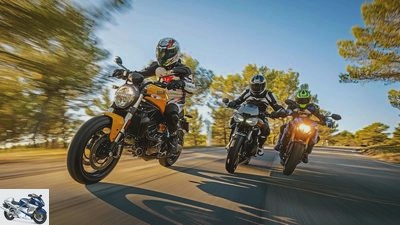
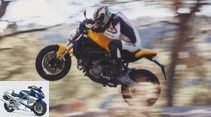
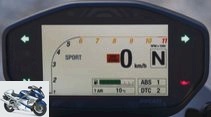

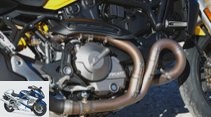
34 photos

1/34
Three motorcycles, three drive concepts. Ducati Monster 821, Suzuki GSX-S 750 and Triumph Street Triple RS in comparison test.

2/34
The Ducati Monster 821 is powered by a two-cylinder four-stroke 90-degree V-engine.
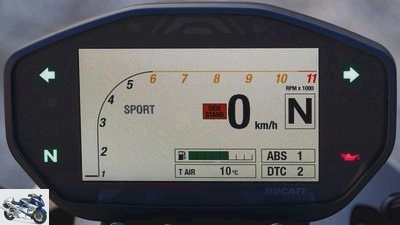
3/34
Contrast medium: The TFT cockpit pleases with excellent readability and is clearly structured.
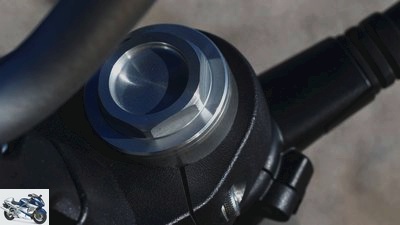
4/34
Bare metal: fork pushed through far without adjustment options.

5/34
Twin art: thin pipes with a sweeping guide end directly in the silencer.
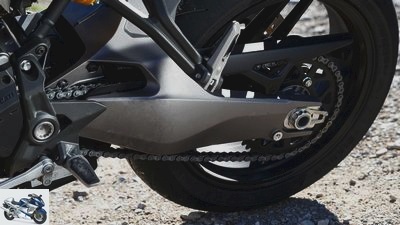
6/34
Rest area: Passenger pegs attached to the rear create more space for the driver’s feet.

7/34
With 109 PS (manufacturer information) it is compared with the lowest power.
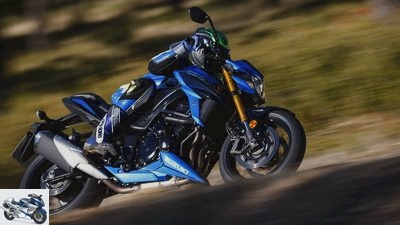
8/34
The Suzuki GSX-S 750 drives a four-cylinder four-stroke in-line engine.
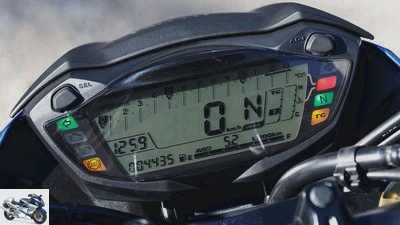
9/34
Savings dictation: The Suzuki is the only one of the trio to have an LC display.
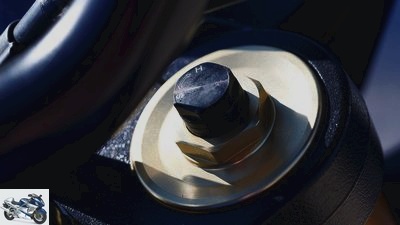
10/34
Turning pleasure: the preload can be changed on the fork just like on the shock absorber.
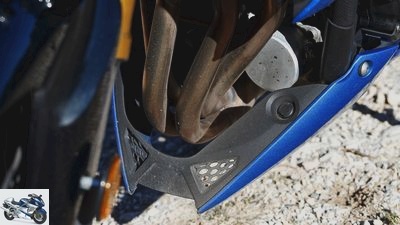
11/34
Four-ender: The manifold pipes come together under the engine.

12/34
Wave play: Nissin radial pliers bite into 310 millimeter wave discs.
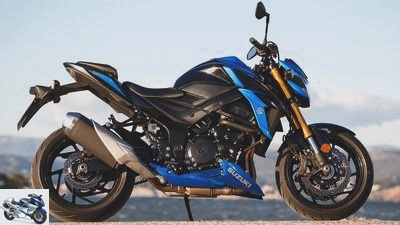
13/34
The Suzuki, with its 114 hp (manufacturer information), lies between its opponents.
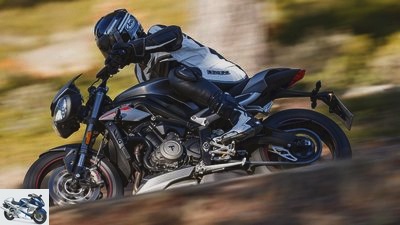
14/34
The Triumph Street Triple RS is powered by a three-cylinder, four-stroke in-line engine.
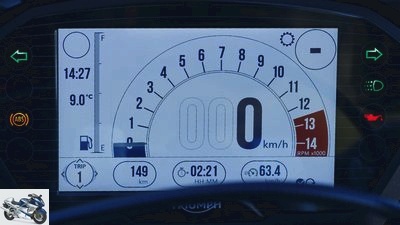
15/34
Eye-catching: The TFT display is controlled by a joystick on the left handlebar fitting.

16/34
A matter of setting: adjust compression and rebound with a screwdriver.
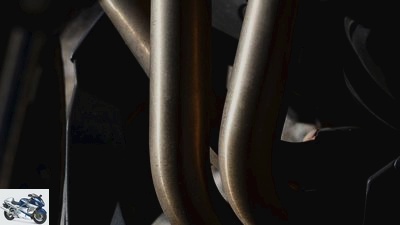
17/34
Dreizack: The pipes lead into the front silencer under the triple drive.
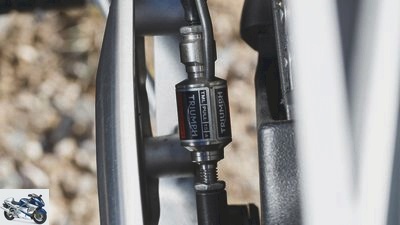
18/34
Step-up: Upshifting made easy with the standard Quickshifter.
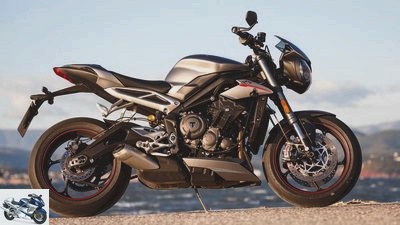
19/34
With 123 HP (manufacturer information) Triumph sends the most powerful machine into the race.
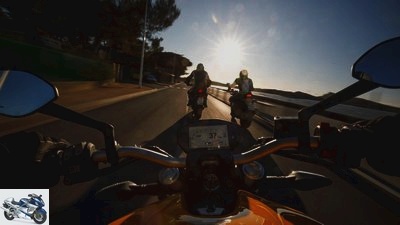
20/34
While the power measurement on the test bench of the Triumph (128 hp) even exceeds the factory specifications by a whopping five horsepower, the other two are left behind. The Ducati (103 PS) and Suzuki (108 PS) each remain 6 PS below the manufacturer’s specifications.
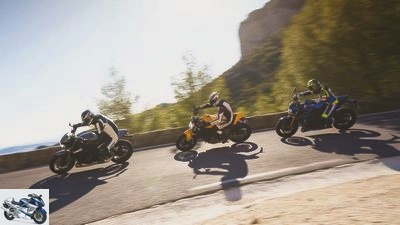
21/34
Probably also because the Triumph weighs the least at 190 kilograms.
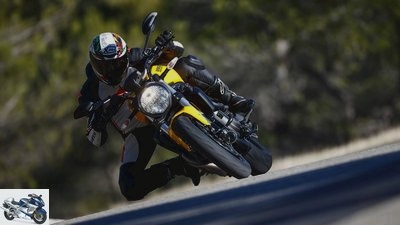
22/34
With 5.1 liters, the consumption of the Ducati is the greatest. Consequence: lowest range with 324 km.
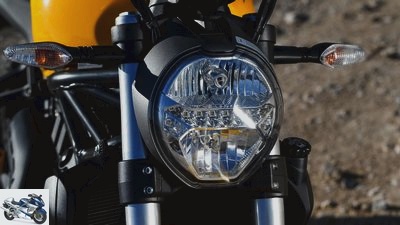
23/34
Recently, an LED daytime running light shines from the headlight of the Duc.
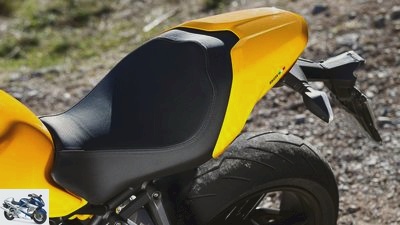
24/34
A sufficiently large cushion not only flatters the pilot’s bottom, the pillion also sits really well.
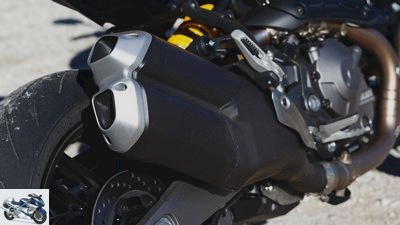
25/34
With the powerful bass sound of the Duc, the vertical weld seam on the double-barreled exhaust is quickly forgotten.
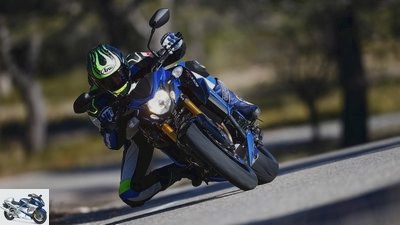
26/34
The Suzuki consumes 4.7 liters on 100 km of country roads. This gives her a range of 340 km, which puts her in the middle of the test.
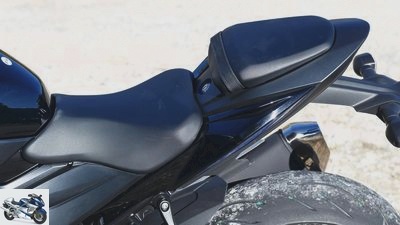
27/34
For the pilot, the wide kneecap is at most bothersome. The passenger has to sit on a somewhat tight cushion, but the knee angle is comfortable.
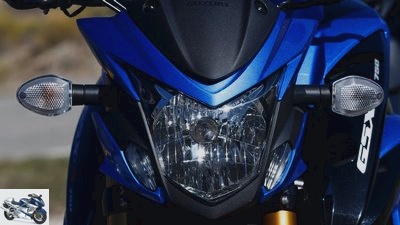
28/34
The Suzuki took over the headlights directly from the GSX-S 1000.
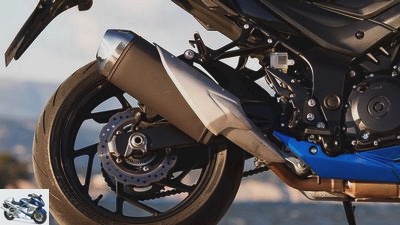
29/34
Sporty or leisurely, the Suzuki always plays along, even without different driving modes.
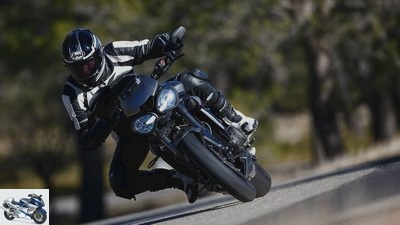
30/34
Lightest machine, largest tank, lowest consumption. No wonder that the Triumph has by far the longest breath. At 4.5 liters per 100 km it comes a whopping 387 km.
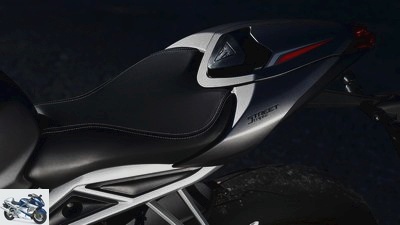
31/34
Contrary to the competition, the Triumph was not designed for two people. Little space, high notches – there is another way to comfort.
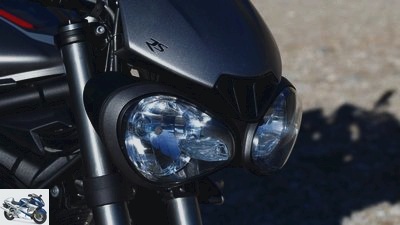
32/34
Similar aggressive front end as that of the Suzuki. The Triumph headlights deliver the brightest light in the test.
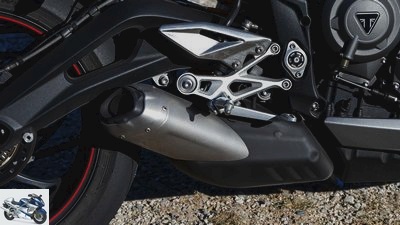
33/34
Best torque, greatest top speed, not noticeable load changes, best response behavior. On the engine side, the Triumph doesn’t fool anyone.
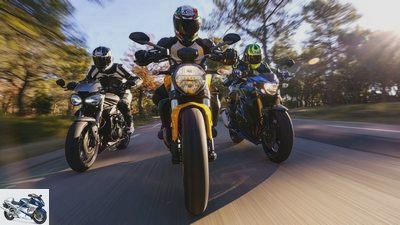
34/34
And the Triumph does not only outperform its competition when it comes to engine comparison. The test win for the Street Triple is no surprise either.
Monster 821, GSX-S 750 and Street Triple RS in the test
Naked bikes from Ducati, Suzuki, Triumph
The renovated Ducati Monster 821 competes against the new Triumph Street Triple RS and the Suzuki GSX-S 750. Three motorcycles, three drive concepts and three times the ideal combination of fun and reason at a reasonable price? Exciting question!
A look at your own account balance reveals the truth. Too much is rarely in black on the printout. Therefore, the price plays an important role in purchases, especially with a motorcycle. So let’s start with what is probably the most sensitive topic: How much does the test trio cost? For the new Ducati Monster 821 is calling D.ucati to 11,490 euros. The Triumph Street Triple RS, the top model in the series for 11,700 euros, is on a similar level. Both differ in displacement, the Italian’s V2 has 821 cm³, the British’s triple 765 cm³, and hardly any in terms of performance. The Italo-V2 pushes 109 Cavallos at 9,250 rpm, the Brit mobilizes 123 brisk horses at 11,700 rpm. Two and three cylinders are thus presented.
Buy complete article

Monster 821, GSX-S 750 and Street Triple RS in the test
Naked bikes from Ducati, Suzuki, Triumph
The row four is still missing
It has always been a domain of the Japanese. However, in the realm of the rising sun, inline fours in the cubic capacity and power segment outlined have become rare. Only the Suzuki GSX-S 750 holds the flag of the three-quarter liter class high. With exactly 749 cm³ and 114 horsepower at 10,500 tours, it has the potential on paper to stand up to the other two. When it comes to the price, she manages it easily. It is available from dealers for 8,890 euros. The Europeans are getting nervous. But costs are only one side of the coin. The other is the equivalent. So now for the fact check.
Let’s start with the Ducati Monster 821
The Ducati Monster 821 is an icon of its own. What Miguel Angel Galluzzi designed with a successful stroke of the pen 25 years ago still inspires in its present form. The fine-tuning that Ducati has given the Monster series over the years ensures that its image never got boring despite the long construction time. Their shapes appear modern, fluid and harmonious. This also applies to the latest derivative of the series, the new Monster 821. The updates for 2018: An LED daytime running light has recently been lit from the headlights that are attached to the fork tubes, and a clearly structured, easy-to-read TFT display provides information on speed and engine speed , Consumption, gear and much more.
The Ducati Monster 821 is powered by a two-cylinder four-stroke 90 degree V engine.
On the other hand, the tank of the new Ducati Monster 821 evokes memories of the beginnings of the Monster series with its ski boot flap closure on the front. In addition, Ducati finally no longer attaches the pillion footrests directly to the rider pegs, but instead mounts the outriggers for the passenger’s feet on the rear of the frame. Ducatisti with shoe sizes from 44 and up are particularly happy to take note of this, as they have not been able to position their boots correctly, especially on the exhaust side. The rear space was simply blocked by the pillion pegs.
What a sound!
Everything positive so far, only the vertical weld seam on the double-barreled exhaust of the Ducati Monster 821 catches the eye negatively. Scale after scale is coarse and uneven. But in the next moment the powerful, bassy sound blows the blame away from the silencers. What a sound. Mamma mia. The joy of the full V2 melody disappears as quickly as it came when the engine is cold. Clutch with high operating force and very tight, jagged engagement behavior means: stalled. In city traffic, the poor controllability quickly gets on your nerves, so quickly in the rough transmission, which sometimes installs an extra idle between gears five and six, quickly strives for the exit of town.
The exhaust of the Monster 821 delivers a rich sound.
Of course, the Duc-V2 does not shine in town with the smoothest running culture. But even in sport mode – with the Touring and Urban engine mappings, there are still two alternatives and three ABS settings and eight-stage traction control to choose from – very predictably and precisely on the accelerator. From 2,500 rpm, in gear stages one to three, it gives the willing sparring partner, in the aisles above it, from 3,000 tours, it easily surfs in traffic, implements every desire for acceleration without grumbling. Below the stated speeds, the V2 noticeably chops with the chain, acoustically clearly indicates that it is not feeling well. From now on he can feel good. And finally turn it off properly.
The Duc delivers the best handiness of the trio
The Ducati Monster 821 shovels a noticeable high torque towards the rear wheel between 6,000 and 8,000 revolutions. In this area, the Italian puts the biggest exclamation marks, if necessary no longer presses so vehemently, but still with relish in the red area. Pleasing: Despite the longest wheelbase (1,485 mm) and a full tank of 213 kilograms, the monster scurries loosely through every bend. Guided on the wide handlebars, it offers the best handling of the trio. This is also due to the three motorcycles’ shortest caster at 93 millimeters and the sporty first-time Pirelli Diablo Rosso III tires, which effectively support the curvy talents of the Duc.
The TFT cockpit of the monsters pleases with excellent readability and is clearly structured.
But the fork, which is too softly tuned, cannot change anything. Even with a light grip on the crisp front brake, which has a hearty initial bite, it sags noticeably. There are no reserves left with sporty anchoring. Since there are no adjustment options at the front, the Ducati driver has to come to terms with it. At the rear, the directly hinged strut works better and can be adjusted in preload and rebound. The bench seat also has adjustment options. The alternatives are 800 or 820 millimeters above the ground. Even those with short legs choose the higher setting, as the knee angle on the narrow tank of the Ducati Monster is otherwise extremely tight. Well padded, the seat flatters the driver’s bottom. At best, a little more active, more relaxed than in a motorcycle, you would like to sit on the bench. But the pillion sits really well. Grippy hollows under the rear, relaxed knee angles, sufficiently large upholstery: Two people are welcome to empty the tank. Up to 324 kilometers are possible with a consumption of 5.1 liters per 100 kilometers.
And the Suzuki GSX-S 750?
Theoretically, the Suzuki stops at the pump even later. It covers a full 340 kilometers with one tank of fuel and consumes an average of 4.7 liters of petrol. A plus point compared to the Italian for the still quite young Suzuki GSX-S 750. It came onto the market in 2017, before that the GSR 750 was vying for buyers from Suzuki. Even if the model history is shorter than that of the Monster, the in-line four-cylinder is as inseparable from the Japanese tradition as the V2 is from the boot among motorcycle manufacturers. And building an inline four is something they can do. Regardless of which gear is engaged, the GSX-S engine runs smoothly from 1,500 rpm. Only the slightly delayed response behavior – on the Suzuki there are still cables and no cables leading to the throttle – as well as the slight load changes due to a little too much play in the drive train tarnish the good impression a bit.
The Suzuki, with its 114 hp (manufacturer information), lies between its opponents.
With this characteristic, the Suzuki engine masters everything in sixth gear, even in urban areas, if necessary with a supportive grip on the clutch, which offers good controllability. This is also called for immediately on land, namely when shifting down quickly in the transmission. The four-man marches on decently even at low speeds, but high speeds are required to advance quickly. Then 9,000 revolutions and more are required. The drive of the Suzuki GSX-S 750 climbs the speed ladder without any outbursts of temperament, but rather evenly in the best four-cylinder manner. The revving does not come to an end until 11,500 rpm. Regardless of whether it is sporty or relaxed, the Suzuki always plays along and never gives up puzzles. It works without different motor modes, only its traction control can be set in four stages.
Chassis of the Suzuki foolproof and good-natured
The Suzuki GSX-S 750 is similarly easy to handle when it comes to the chassis. The preload of the upside-down fork and shock absorber can be adjusted. That was it. But as with the engine, additional options are obsolete because the chassis works foolproof and good-natured. Well balanced, with a good mix of comfort and stability, fork and damper master all challenges. And when things are moving fast, the chassis has enough damping reserves to nip unrest in the bud. The Suzuki reveals a similar character when it comes to the handle on the adjustable brake lever.
Savings dictation: The Suzuki is the only one of the trio to have an LC display.
Not snappy, but sporty enough even for the brisk curve dance, the radially mounted brake calipers delay man and machine, the ABS, which is a bit too defensive, effectively and safely prevents the unwanted front flip. And because the seating arrangement for the driver is also successful, as is typical for four cylinders, the wide knee joint at most disturbs, the Suzuki GSX-S 750 is developing into a great playmate for every situation in life. Even a passenger is welcome to come along. Its upholstery is a bit tight, but the knee angle is comfortable and casual.
Can the Triumph Street Triple RS convince?
The Street Triple was not built to transport a second person. Little space, high notches – the others can do that better. But the Triumph Street Triple RS as the hottest variant of the Street Triple family, which has been part of the Triumph program since 2007, should be pretty bumpy. Everything that is quick, good and not exactly cheap can be found on it. These include an adjustable Showa fork, an equally adjustable spring strut from Ohlins, sticky Pirelli Supercorsa SP tires, several modes for ABS, traction control and engine response, a Brembo radial pump, an automatic gearshift and a TFT cockpit. The list is long. The special thing about it: It still costs little more than the Ducati Monster 821. No wish remains unfulfilled because the Triumph is so equipped that it turns razor-sharp on the country road.
Triumph Street Triple RS.
The Triumph Street Triple RS lies like the proverbial board, cannot be shaken by anything. The brake pinches brilliantly in the 310 discs at the front. And when acceleration counts from the apex, Triumph plays first fiddle in this trio anyway. Particularly noteworthy: the range from 7,500 rpm. Then the triplet burns oxygen and gasoline with even more vehemence that it is a pleasure to squeeze it out to almost 12,000 tours. Based on the performance curves, its superiority may be a bit surprising, the lowest weight with a full tank of 190 kilograms and the highest measured power of 128 hp guarantee the speedy propulsion. The other two are at least 23 kilograms heavier, and both Ducati and Suzuki are a few kilowatts behind the promised performance.
But the Triumph Street Triple RS is not only fast and inclined, the Triple is also convincing beyond the fastest line. Even more polished than the Suzuki four-wheeler, it accelerates, even at 40 km / h in city traffic in sixth gear. In everyday life, the Triumph proves to be a tame companion on the engine side, whose fiery talents are always just a gasp away for the next pilot light.
jkuenstle.de
The Triumph’s TFT display is controlled by a joystick on the left handlebar fitting.
If the engine plays along with all demands beyond the sports drive, the chassis lacks comfort. Although the fork and shock absorber offer a lot of adjustment options, their basic design is tight. The other two are more disc-friendly. The seating position, however, is back to the level of the Suzuki. Because the handlebars are positioned a little lower, the driver has to bend more forward, but the knee joint is narrower for three-of-a-kind than for a four-in-a-row. And because the thirst of the Triumph Street Triple RS is the lowest with an average of 4.5 liters per 100 kilometers, and it can travel up to 387 kilometers, it proves once again that fun and common sense do not have to be opposites.
Which bike will take the test win??
So is everything appropriate? Time for the conclusion. The Ducati Monster 821 is a great motorcycle without any real weaknesses. Viewed soberly, however, their pricing seems quite ambitious, even when looking through the green-white-red glasses. With the 939 engine, such as in the Hypermotard, things would look different. In contrast, the Suzuki GSX-S 750 shows that there is a performance at a slightly higher level for much less thalers. It turns out to be a crisp driving machine with the best price-performance ratio. From this point of view, the Triumph Street Triple RS is not that far off. It costs more, but convinces with a workmanship (raised lettering on the tank, screw heads as examples) and equipment that makes friends of the pure incline theory up to racetrack igniters happy – and at a reasonable price.
MOTORCYCLE test result
1. Triumph Street Triple RS
The Triumph Street Triple RS is the most expensive motorcycle in the comparison, but at the same time has the most extensive and best equipment. Good for almost the entire march through the points evaluation. The triplet rocks, is not cheap, but worth the price.
2. Suzuki GSX-S 750
A 750 for this course – that’s quite a number. The Suzuki GSX-S 750 can do much more than just be cheap. Regardless of whether it is a leisurely round or a brisk home route, it cuts a fine figure everywhere. To ask for more would be presumptuous at this price.
3. Ducati Monster 821
The Ducati Monster 821 makes the hearts of V2-disciples simply beat faster. Your line is unique, beguiling. But even icons have to be measured against everyday standards. And at the price, the “Amore” has to be really hot to strike.
Related articles
-
Triumph Street Triple R, Honda Hornet 600 and Ducati Monster 1100 Evo in the test
fact 17th photos fact 1/17 The Triumph Street Triple R, Honda Hornet 600 and the Ducati Monster 1100 Evo compete against each other. Which of them is the…
-
35 photos 1/35 BMW S 1000 R, Ducati Monster 1200 S, KTM 1290 Super Duke R and Triumph Speed Triple R in comparison test….
-
39 pictures 1/39 The Triumph Speed Triple: The price 11,740 euros (the test motorcycle with windshield for 245 euros and …
-
KTM, Ducati, Triumph and Suzuki bikes in comparison
Jahn 16 pictures Jahn 1/16 How many cylinders does a biker need to be happy? Which engine concept impresses with which advantages? A comparison of four …
-
Aprilia SL 750 Shiver GT, BMW F 800 R, Suzuki GSR 600, Triumph Street Triple R.
K Aprilia SL 750 Shiver GT, BMW F 800 R, Suzuki GSR 600, Triumph Street Triple R. make a wish Content of There is an unconditional desire for unlimited…
-
Triumph Speed Triple S against Suzuki GSX-S 1000 in comparison test
Rivas 19th photos Arturo Rivas 1/19 Image gallery: Triumph Speed Triple vs. Suzuki GSX-S 1000. Arturo Rivas 2/19 The universally popular biker greeting…
-
Comparison test: Aprilia SL 750 Shiver, Benelli TnT 899S, Ducati Monster 696, Triumph Street Triple
Gargolov Comparison test: Aprilia SL 750 Shiver, Benelli TnT 899S, Ducati Monster 696, Triumph Street Triple Italy 3-1 England Content of The European…
-
Suzuki GSR 600, Triumph Street Triple, Yamaha FZ6 Fazer S2
Artist Suzuki GSR 600, Triumph Street Triple, Yamaha FZ6 Fazer S2 Comparison test of mid-range bikes Middle-class bread and butter? That was once. All…
-
Comparison test Ducati Monster 797 and Suzuki SV 650
Artist 28 photos 1/28 Ducati Monster 797 and Suzuki SV 650 in comparison test. 2/28 Ducati Monster 797: Modern, the first: The…
-
Yamaha MT-09 and Triumph Street Triple tested
www. 35 pictures www. 1/35 Whether the multiple test winner, the Triumph Street Triple, the Yamaha MT-09 …